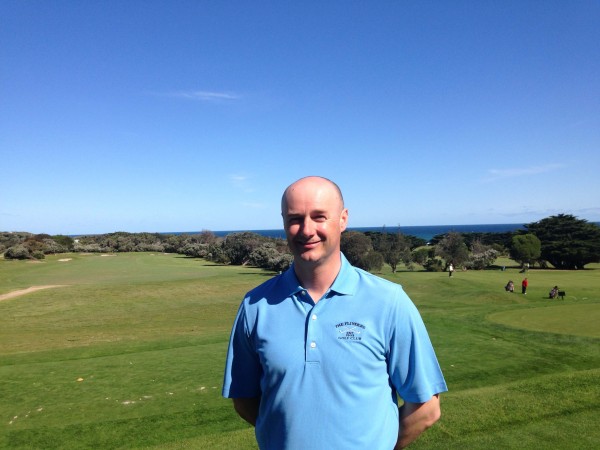
After more than a decade working as a golf professional at Flinders Golf Club on the Mornington Peninsula, Scotsman Gavin Coyle has revealed it’s the club’s similarities to his homeland that have sustained his passion for both the job and the seaside links course. Coyle, who hails from Gourock Golf Club on Scotland’s west coast, said he’s reminded of his heritage when he peers out across Bass Strait on almost a daily basis.
“It’s almost like you’re in the west of Scotland,” Coyle admitted. “We had two film crews come down last year, one filmed a movie (set) in Scotland and the other one was (set) in Ireland. It’s a lot like home.”
At just 5,277 metres and with a par of 69, Flinders proves that lengthening courses to offset technological advancements with the golf ball isn’t necessary.
“It is enjoyable no matter the conditions,” Coyle said. “It’s not like going to a 450-metre par-four into the wind and the tour guys are hitting drivers and a three-wood to the green. That just beats you up. Even on a windy day, because it’s a short course, you can still enjoy yourself.
Flinders was founded in 1903 and is the oldest golf course in Victoria that still exists at its original site. Coyle insists its condition and playability has improved every year since he came to the club.
“There’s not many that can say that.”
Since Coyle’s arrival, Flinders has added couch fairways and overhauled its 11th hole, known as ‘Fairy Dell’. Formerly a short, downhill dogleg-left par-four framed by houses to the left, the green was moved close to 100 metres to the right, which transformed the hole into a short dogleg-right and protected the nearby homes from any stray tee shots.
“We won an award from the Australian Golf Course Superintendents Association for ‘excellence in golf course management’. It’s a good golf hole now, much better than the old 11th. It was a kind of blind lucky dip shot over the slope, down the left-hand side.”
But asked which hole at Flinders is his favourite, Coyle didn’t hesitate in saying it was the precarious 263-metre par-four fourth. Known as ‘The Coffin’, the third hugs the coastline and offers sweeping views of Bass Strait to the left from the tee. “The view from the tee, the view from the green, you can hear the waves crashing.”
The hole’s risk-reward design is equally appealing according to Coyle.
“You’ve got two ravines, you can play safe. I can get to the green in normal conditions. The risk is, if I don’t quite carry the 230-metre carry, I’m in the second coffin and I can’t guarantee a good lie. What’s worse is if I land on the green and the ball doesn’t stay on the green. If I’m over the back, I need a short game like Phil Mickelson to get the ball on the green. It’s a sloping green so there’s pretty much danger lurking all around it. The first time I played it, I five-putted it. For the average handicapper, you’ve also got a ravine, which is about 150 metres off the tee. Calm conditions, most people can carry it but if you’re into the wind, you’ve got that dilemma to lay up short.”
Coyle moved to Australia from Scotland in 2000 and remembers an epiphany he had while competing in a Scottish mini-tour event.
“I remember playing in a final round and I had 110 yards to the green and I had a four-iron out and I backed off it because I didn’t think I could get to the green and when I changed to the three-iron, the hail stones were bouncing off my face like somebody was stubbing a cigarette out and I thought, ‘there must be more to life than this’.”
He quickly took up a job at Eagle Ridge, which he held for 10 months, before accepting a teaching professional role at The National Golf Club, before moving to Flinders in 2003.




![Win the golfing experience of a lifetime, at the Hawai‘i International Week of Golf, valued at $6,900 [Winner Announced] Win the golfing experience of a lifetime, at the Hawai‘i International Week of Golf, valued at $6,900 [Winner Announced]](https://www.insidegolf.com.au/wp-content/uploads/Hawaii-Comp-500x294.jpg)